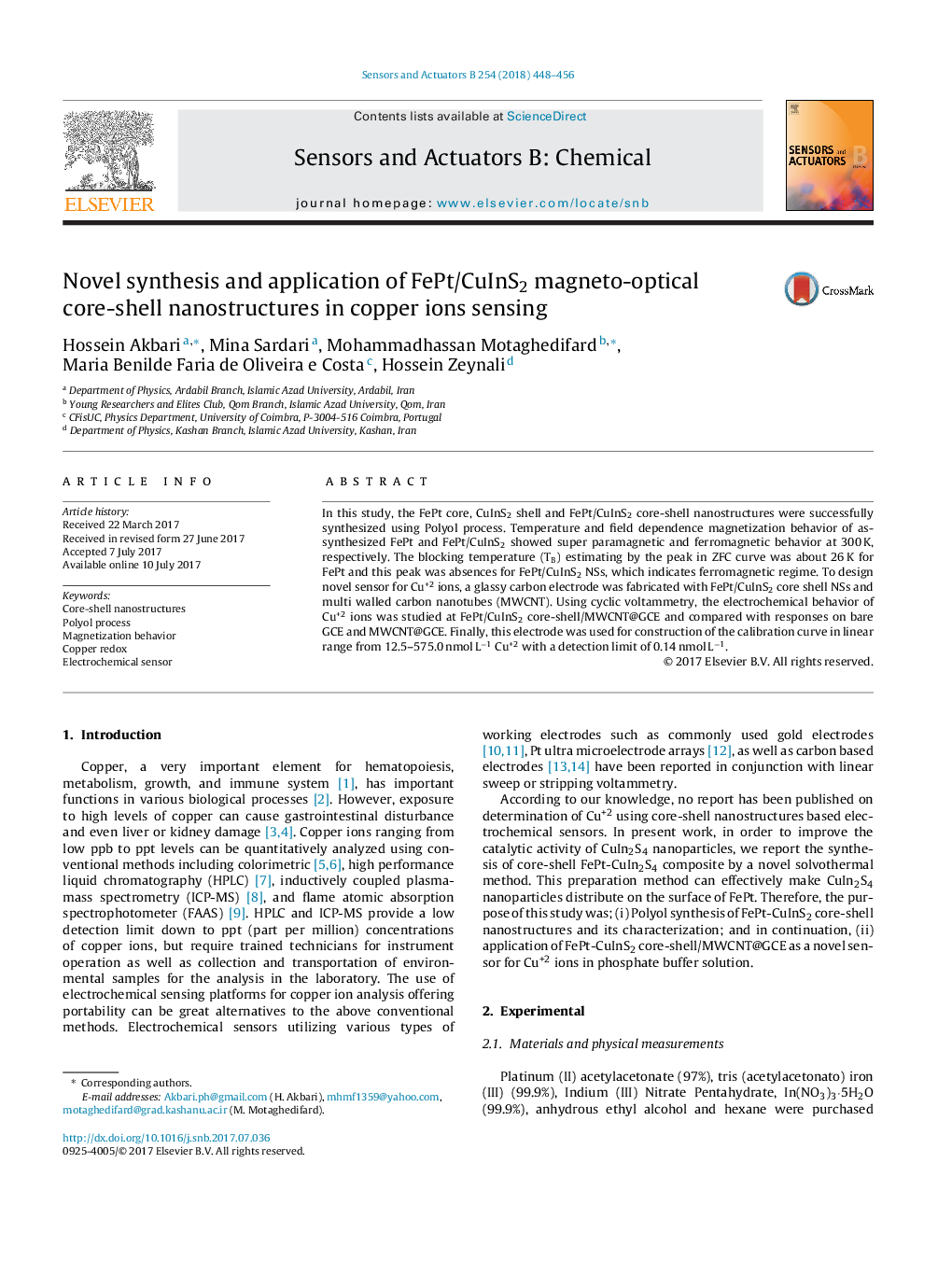| Article ID | Journal | Published Year | Pages | File Type |
|---|---|---|---|---|
| 5008697 | Sensors and Actuators B: Chemical | 2018 | 9 Pages |
â¢FePt-CuInS2 core-shell nanostructures were successfully synthesized using polyol process.â¢Temperature and field dependence magnetization behavior of as-synthesized FePt and FePt/CuInS2 showed super paramagnetic and ferromagnetic behavior at 300 K.â¢A glassy carbon electrode was fabricated with FePt/CuInS2 core shell NSs and MWCNT.â¢By FePt/CuInS2 core-shell/MWCNT@GCE, a linear range from 12.5-575.0 nmol Lâ1 Cu+2 with a detection limit of 0.14 nmol Lâ1 was obtained.
In this study, the FePt core, CuInS2 shell and FePt/CuInS2 core-shell nanostructures were successfully synthesized using Polyol process. Temperature and field dependence magnetization behavior of as-synthesized FePt and FePt/CuInS2 showed super paramagnetic and ferromagnetic behavior at 300 K, respectively. The blocking temperature (TB) estimating by the peak in ZFC curve was about 26 K for FePt and this peak was absences for FePt/CuInS2 NSs, which indicates ferromagnetic regime. To design novel sensor for Cu+2 ions, a glassy carbon electrode was fabricated with FePt/CuInS2 core shell NSs and multi walled carbon nanotubes (MWCNT). Using cyclic voltammetry, the electrochemical behavior of Cu+2 ions was studied at FePt/CuInS2 core-shell/MWCNT@GCE and compared with responses on bare GCE and MWCNT@GCE. Finally, this electrode was used for construction of the calibration curve in linear range from 12.5-575.0 nmol Lâ1 Cu+2 with a detection limit of 0.14 nmol Lâ1.
Graphical abstractDownload high-res image (105KB)Download full-size imageDesigning FePt-CuInS2 core-shell NSs/glassy carbon electrode to sense trace amounts of copper (II) ions.
